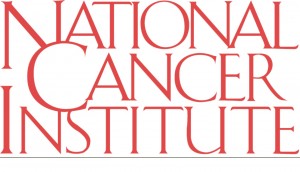 The Union Cabinet on Thursday approved setting up of a Rs 2000-crore National Cancer Institute (NCI), which will be housed in an upcoming campus of the All India Institute of Medical Sciences at Jhajjar, Haryana.
The Union Cabinet on Thursday approved setting up of a Rs 2000-crore National Cancer Institute (NCI), which will be housed in an upcoming campus of the All India Institute of Medical Sciences at Jhajjar, Haryana.
To be completed by 2018, the NCI seeks to plug the gap in offering cancer treatment facilities in the public sector including specialised tertiary care.
Cancer has emerged as a major public health concern in India, where every year 11 lakhs new cases are diagnosed with a mortality of 5.5 lakhs per year.
In 2013, an estimated 10,86,783 new cancer cases were reported and the numbers are slated to rise to 1148692 in 2015 — a jump of over 5.5 per cent in two years. Tobacco remains the most prominent disease causing factor.
The data, collated by the Indian Council of Medical Research, however, is not exhaustive as it does not have inputs from 25 regional cancer centres and populous states like Bihar and Utttar Pradesh.
Males have higher occurrence of cancers of lung, mouth, oesophagus and stomach. Cancers of tongue, rectum, liver, lung, prostate, brain, non-Hodgkin’s lymphoma and a type of leukaemia have shown statistically significant increase. Cancers of uterine cervix and gall bladder too is fairly common.
But cancer treatment facilities in India are inadequate, compared to the World Health Organisation norms that requires one radiotherapy machine per million population. India currently has 0.41 machines per million population.
The Rs 2,035 crore institute will operate on the lines of National Cancer Institute, USA and DKFZ, Germany as a nodal center for indigenous research as well as preventive and curative aspects of cancer care.
In addition, the institute aims to conduct research on cancers that are more specific to India such as tobacco related cancers, cancer of the uterine cervix, gall bladder cancer and liver cancers.
The focus will be on understanding, analysing the cause and genesis of the above cancers.
The NCI will have 710 beds for different facilities like surgical oncology, radiation oncology, medical oncology, anaesthesia and palliative care and nuclear medicine.
It will have a tissue repository which is the first of its kind in India, according to a press statement issued at the end of the Cabinet meeting.
Besides the cancer institute, the second campus of AIIMS will also have a National Centre for Heart Diseases along with a full fledged hospital for which the Haryana government had provided 300 acres of land.
Source: Deccan herald


 More than one-third of U.S. twins, and more than three-quarters of triplets and other multiple births, are now born as a result of fertility treatments, according to estimates from a new study.
More than one-third of U.S. twins, and more than three-quarters of triplets and other multiple births, are now born as a result of fertility treatments, according to estimates from a new study. President Barack Obama announced Monday the US will shift $100 million into research efforts in the next three years aimed at curing HIV (Human Immunodeficiency Virus).
President Barack Obama announced Monday the US will shift $100 million into research efforts in the next three years aimed at curing HIV (Human Immunodeficiency Virus).






 Low treatment costs and high levels of expertise have made India a leading destination for heart treatment for people from West Asian and African countries, doctors said.
Low treatment costs and high levels of expertise have made India a leading destination for heart treatment for people from West Asian and African countries, doctors said.